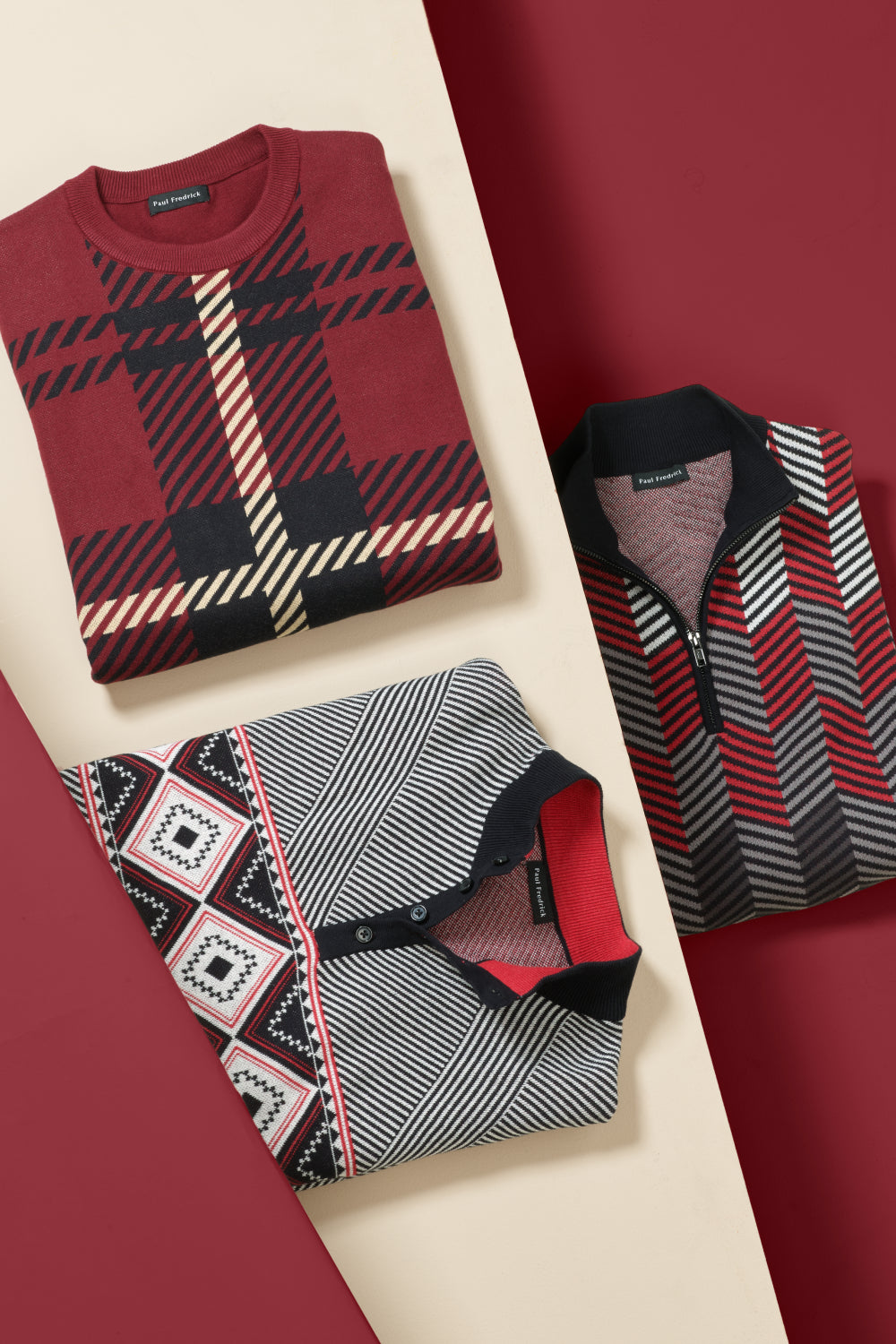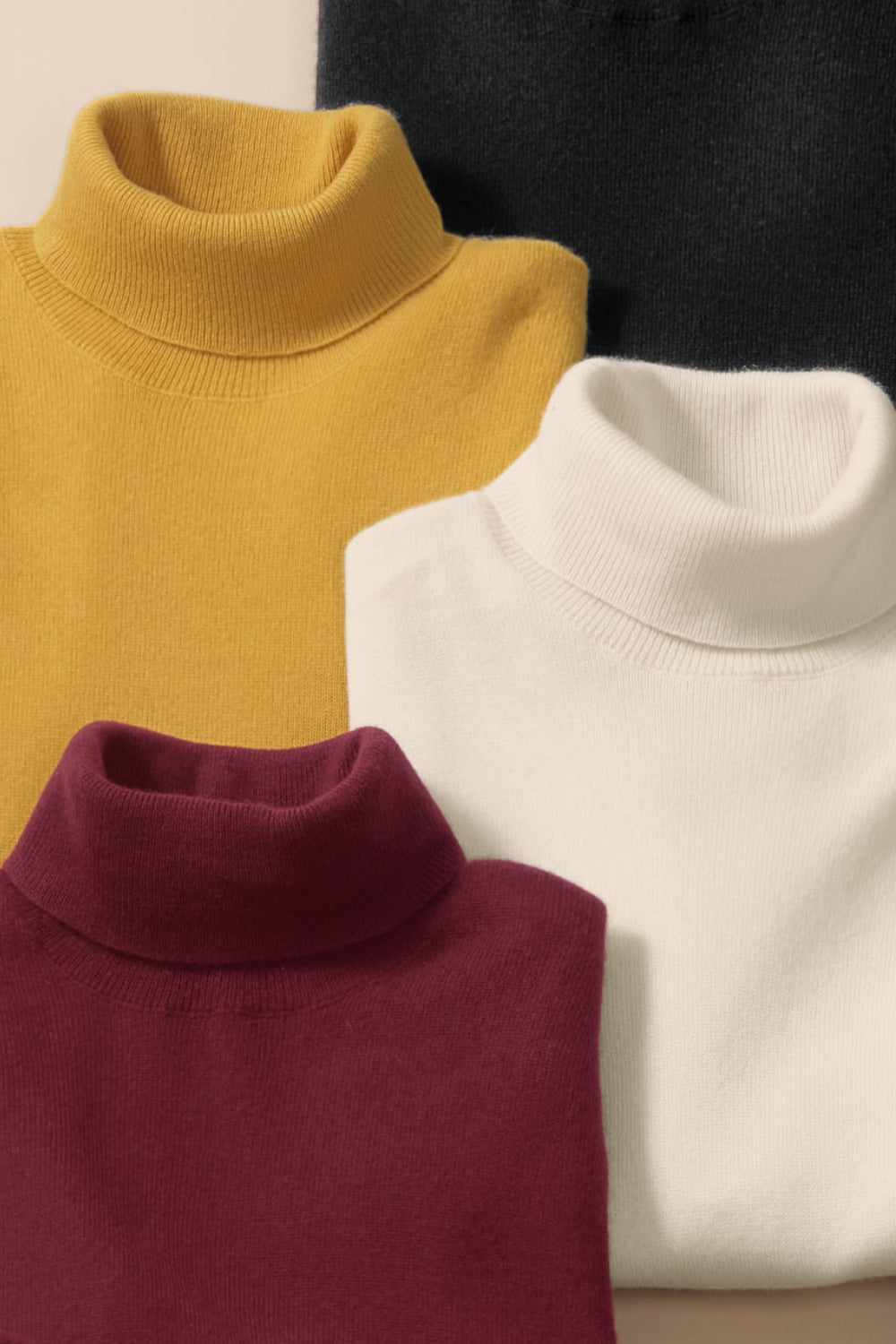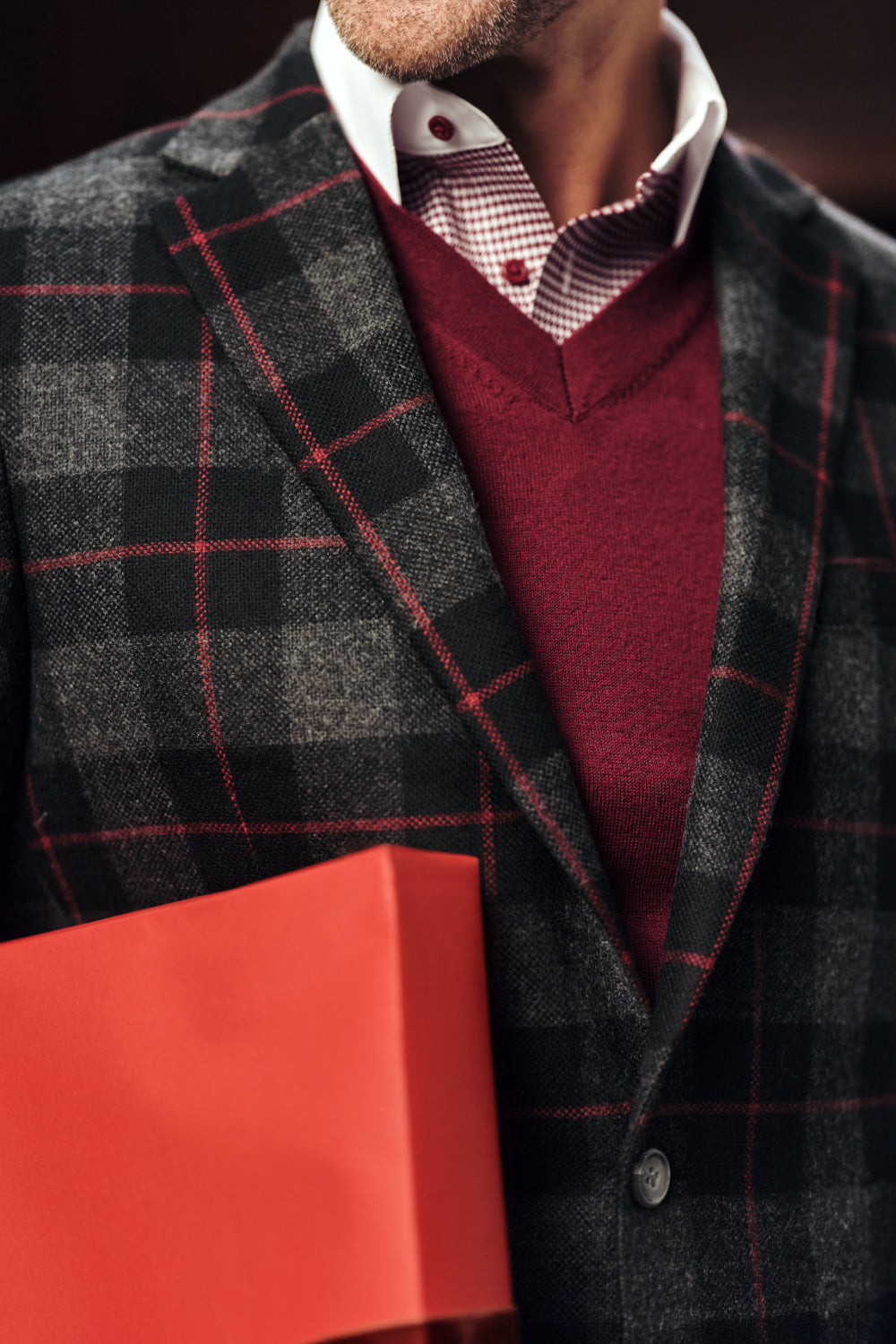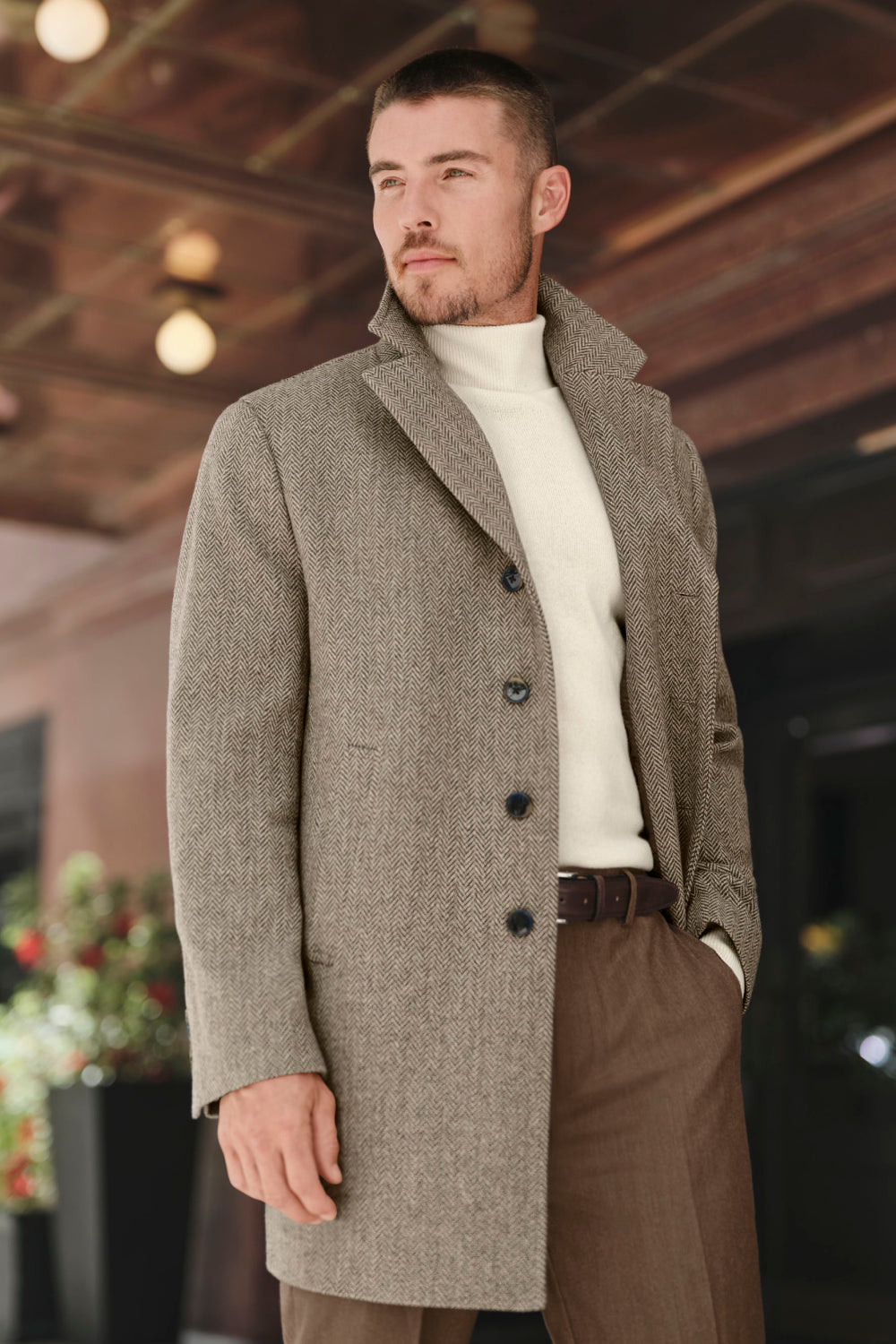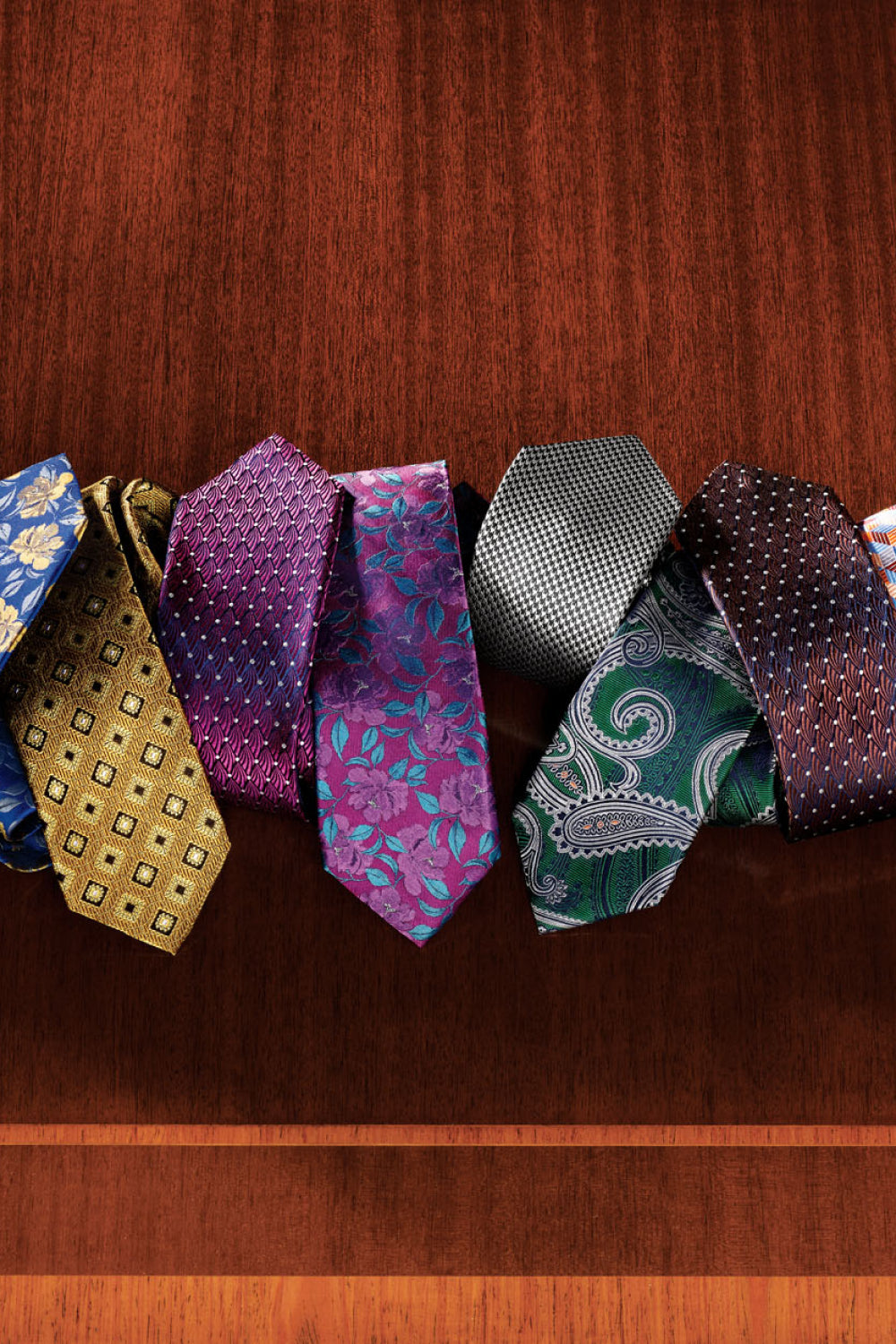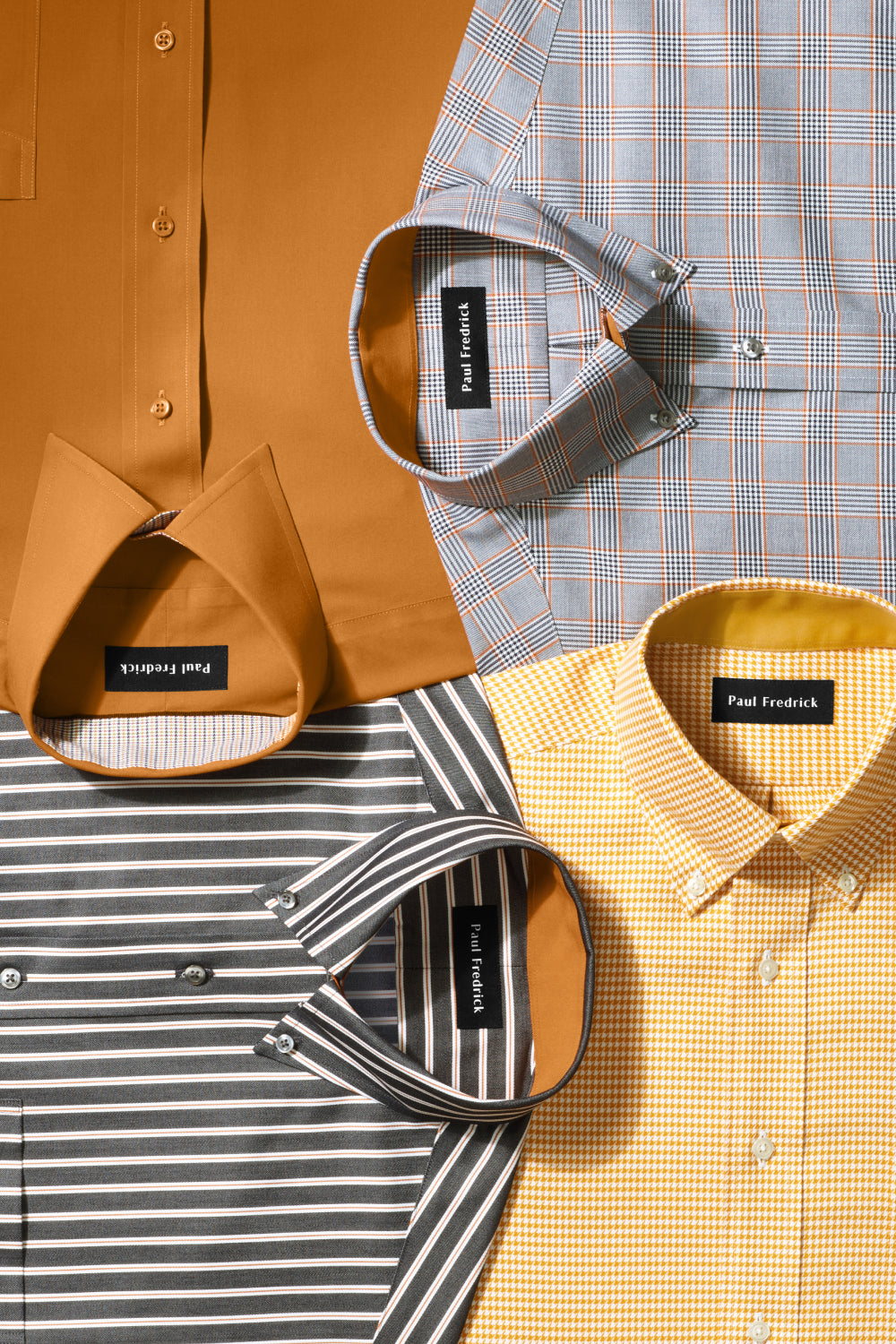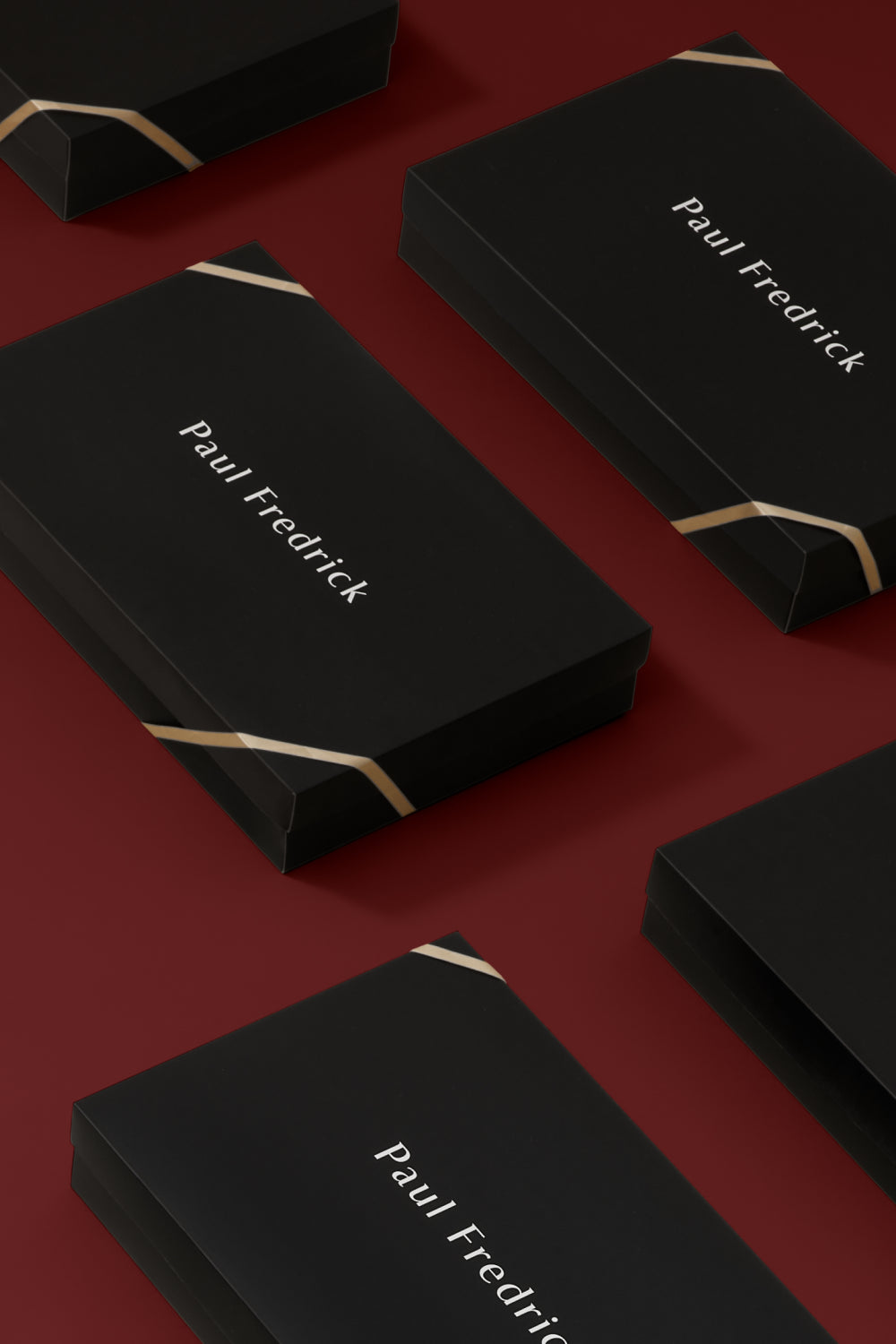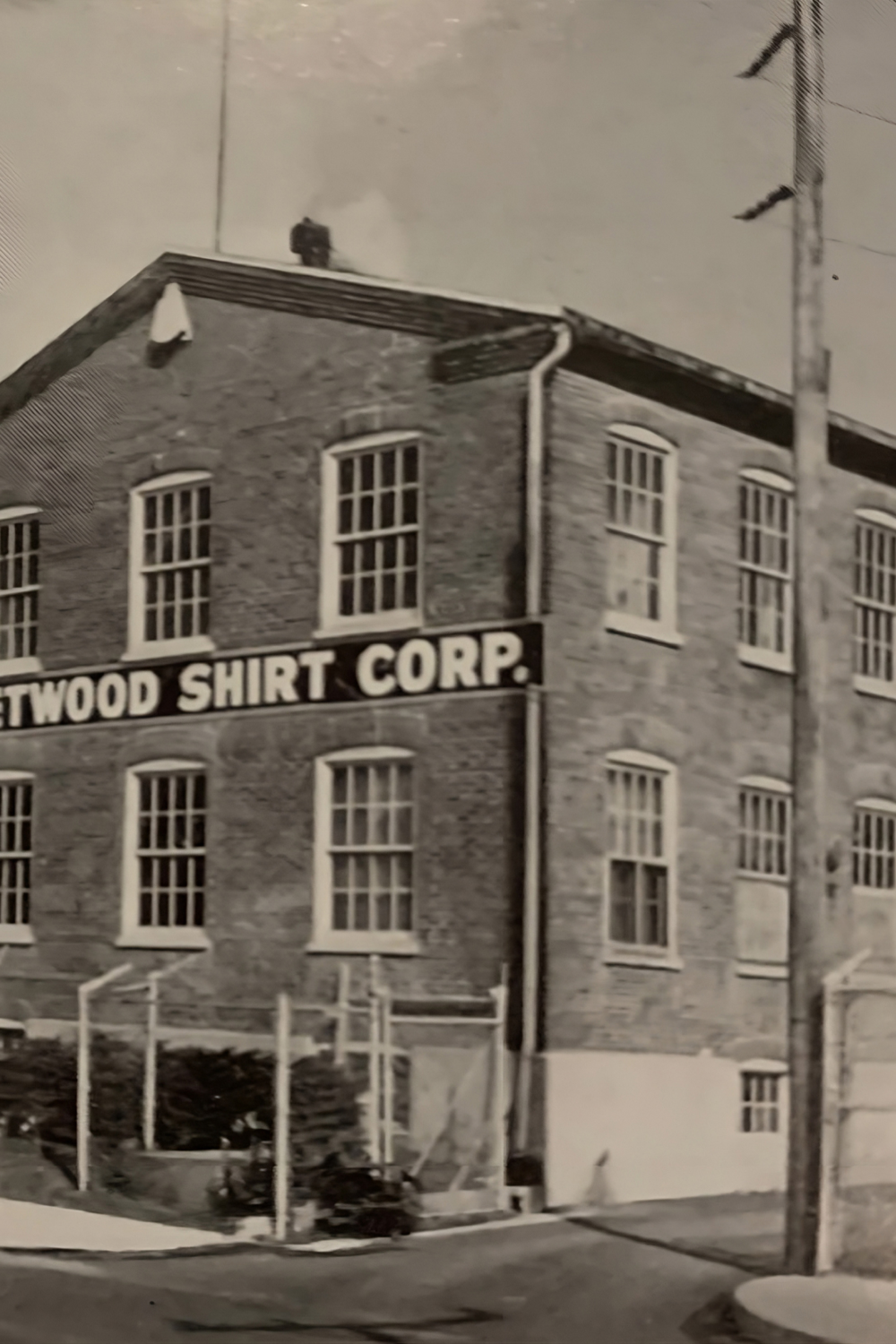What’s the Difference Between a Tuxedo and a Suit?
Suits and tuxedos are two types of men’s formal wear ideal for special occasions or settings where looking your best is a priority. While they may look similar at first glance, there are some significant differences between the two.
Suits vs Tuxedo: Formality
Suits vs Tuxedo: Appearance and Fabric
Both suits and tuxedos are most commonly made of wool, but a variety of fabrics can be used for both. It’s less about the specific materials used and more about the way they are presented. Some suits might lean into the more relaxed feel of cotton or linen, while tuxedos will go for luxury with refined and luxurious fabrics that give a cosmopolitan air (high thread count wool, silk and cashmere being options).
Tuxedo pants typically have a satin waistband and side striping, mirroring the satin finish of the jacket’s lapels and buttons. This design element usually is not present in suit pants or jackets. As far as color goes, a tux is traditionally black or a dark midnight blue (white is also common as well as other solid colors), while suits come in a greater variety of colors and patterns that provide occasions to display a bit more individuality.
Suits vs Tuxedo: Accessories
Accessories are a great way to add some personality and style to your formal attire. Here are some of the key accessories to consider when styling a tuxedo versus a suit:
Accessories for a Tuxedo
- Bow Tie or Necktie: A tuxedo should always be worn with a tie, though modern trends offer exceptions to this rule in certain situations (think your favorite celeb making a statement on the red carpet). The black bow tie is most associated with a traditional tux ensemble, but a slim necktie in black or another solid color to match your tux (use discretion if introducing a pattern) is a great alternative if wearing a dress shirt with a regular collar. If wearing a tuxedo shirt, a bow tie is the expectation.
- Cummerbund or Waistcoat: A cummerbund or waistcoat (vest) can add an extra layer of sophistication to your tuxedo. They come in a range of colors and fabrics, but black satin or silk is the most traditional option .
- Cufflinks: Cufflinks can add a touch of elegance worn with a French cuff shirt. They come in various designs and materials, but silver or gold with a simple design is a safe and classic choice.
- Pocket Square: A pocket square is a small, square piece of fabric that is placed in the chest pocket of your tuxedo jacket. It can add a pop of color or pattern to your outfit.
- Button Studs or Covers: If you’re wearing a bowtie with your tux, consider adding button studs to hide the top buttons on your tuxedo shirt, if it is designed to accommodate this often overlooked but classy finish.
Accessories for a Suit
- Necktie or Bow Tie: A necktie or bow tie is the most common accessory to pair with a suit. It can be plain or patterned, depending on the occasion and your personal style. Choose something to complement or play off of the colors or patterns of your shirt and suit jacket.
- Pocket Square: Like with a tuxedo, a pocket square is a great accessory to add some flair to a suit. It can be matched with the tie or shirt or can contrast for a more eye-catching look.
- Belt: Suits are typically worn with a belt to hold up your pants. It's traditional to match the color of your belt with your shoes, but we recommend experimenting with what looks best with your outfit.
- Watch or Bracelet: A watch is a practical and stylish accessory to wear with a suit. It can be a simple leather strap watch for a classic look, or a more modern metal band watch for a trendier look. If you don’t have a watch, accessorizing with a bracelet is another way to add some panache to your wrist in the age of smartphones.
- Vest: Unless you plan on keeping your jacket buttoned at all times, a vest is a great way to add another layer underneath.
- Lapel Pin: To make a statement or elevate your look, add a lapel pin that matches either your shirt or tuxedo color.
Suits vs Tuxedo: Shirt Style
Choosing the right shirt to wear with your suit or tuxedo is essential to create a polished and refined look. Pay attention to these different elements of a shirt when making your selection.
Suit Shirt Style
- Collar: Choose a dress shirt with a point or spread collar. A point collar is suitable to wear with or without a tie, while a spread collar should always be worn with a tie.
- Fabric: A cotton or a cotton blend is a safe choice for formal events. You can opt for a plain or textured fabric depending on your preference.
- Color: White and light blue dress shirts are classic and timeless options. You can also experiment with patterns or stripes but be mindful of the suit color and pattern.
- Cuffs: These can either be Button Cuffs or French cuffs that are worn with cufflinks.
Tuxedo Shirt Style
- Collar: The most appropriate shirt collar for a tuxedo is a wingtip collar. It has a unique shape that complements the tuxedo's lapels and bow tie. A refined white dress shirt with a turndown collar—a point, spread, or similar collar—is also equally acceptable options.
- Fabric: Tuxedo shirts are usually made from cotton or a cotton blend with a special weave that gives a textured appearance.
- Pleated Front: The classic tux shirt will feature a pleated front for added detail, but some might consider it a bit dated and opt for a cleaner, modern look without the extra ruffles.
- Color: White is the most traditional and appropriate color for a tuxedo shirt. However, if you are attending a more contemporary event, you can choose a black shirt for a modern twist.
- Cuffs: Tuxedo shirts typically have French cuffs, which are double cuffs that are folded back and fastened with cufflinks. They add an elegant and sophisticated touch to your tuxedo.
Suit vs Tuxedo: Shoes
When it comes to pairing shoes with a tuxedo, there are a few classic options to choose from. Here are some of the most popular choices:
- Patent leather shoes: This is the most traditional and formal option. Patent leather shoes have a shiny finish that pairs well with the formal aesthetic of a tuxedo. They are usually black, but you can also find them in other colors like burgundy or dark blue.
- Velvet slippers: Velvet slippers, also known as smoking slippers and not to be confused with bedroom slippers, are a stylish and comfortable alternative to patent leather shoes. They have a soft, luxurious feel and are often embroidered or embellished with a crest or emblem. Velvet slippers are typically worn without socks, which can give your look a more relaxed and stylish vibe.
- Dress boots: For a more modern twist on formal footwear, you can opt for dress boots. These are ankle-height boots that are made from high-quality leather or suede. Dress boots can add a touch of ruggedness to a tuxedo look while still maintaining a formal feel.
- Loafers: Loafers are a versatile option that can work well with a tuxedo. They can be dressed up with a pair of black leather loafers. Loafers are a comfortable and stylish option that can work well for a variety of formal occasions.
Tuxedo vs Suit Price
The price of a tuxedo or a suit can vary depending on several factors such as the quality of the fabric, brand, style and where you purchase it. In general, tuxedos are more expensive than suits given their higher quality materials and more detailed designs.
Here are some factors that may impact the price of a tuxedo or a suit:
Fabric Quality
The quality of the fabric can greatly affect the price of a tuxedo or a suit. High-end fabrics such as wool or silk can be more expensive than synthetic materials.
Brand
Designer brands and luxury labels often have higher price points for their tuxedos and suits due to the brand name and reputation.
Style & Details
Tuxedos typically have more intricate details and design elements such as satin lapels, satin stripes on the pants and a unique collar style. These details can add to the overall cost.
Accessories
The cost of accessories such as bow ties, cummerbunds and cufflinks can also impact the overall cost of a tuxedo.
Tuxedo vs Suit for a Wedding
Deciding whether to wear a tuxedo or a suit for a wedding depends on the dress code and formality of the event. Here are some factors to consider:
-
Dress Code
If the dress code is black-tie or formal, a tuxedo is the most appropriate choice. However, if the dress code is semi-formal or business attire, a suit is an appropriate option. -
Time of Day
If formal dress is requested for an evening wedding, a tuxedo can be an appropriate choice. As trends in fashion have overall moved in a more casual direction, it is hardly expected in all instances (unless black tie is specifically requested). However, for a daytime wedding, a suit is the formal go-to. -
Wedding Style
If the wedding is traditional, formal or held in a grand ballroom, a tuxedo is a safe choice. However, if the wedding is more casual or outdoors, a suit may be a better option. -
Personal Preference
Ultimately, your personal preference should also be a factor in your decision. Consider what you feel most comfortable and confident in and choose an outfit that reflects your personal style while being appropriate for the occasion.
What to Wear for Different Dress Codes
While both suits and tuxedos have their place in men's formal wear, it's important to choose the right one for the occasion. Suits are a great choice for daytime events or less formal occasions, while tuxedos are the perfect choice for black-tie events or dress code-specific evening weddings. By understanding the differences between suits and tuxedos, you can choose the appropriate attire for your next formal occasion and make a lasting impression.
White Tie
A white tie affair is the most formal type of dress code, and it requires a specific and traditional outfit. The white tie essentials include:
Tailcoat: A black tailcoat is the traditional option for a white tie event. It should be well-tailored and fit you perfectly.
Trousers: Black dress trousers with a high waist and a single row of braid down the leg are appropriate for a white tie event.
White Wing Collar Shirt: A white wing collar shirt is a must for a white tie event. It should have French cuffs and you should wear cufflinks.
White Bow Tie: This dress code’s namesake, a white bow tie made of silk or other luxurious fabric is necessary for a white tie event. It should be tied by hand and not be pre-tied.
Waistcoat: A white waistcoat made of a silky or piqué fabric is an essential part of a white tie outfit. It should cover the waistband of the trousers.
Black Patent Leather Shoes: You should wear black patent leather shoes with your white tie outfit. They should be well-polished and have a simple design.
Black Tie
A black tie affair is a formal event that requires specific dress code guidelines. The black-tie essentials include: Tuxedo: A black or midnight blue tuxedo is the most traditional and appropriate option for a black-tie affair. A white tux can be another option. The jacket should be single-breasted, have a peak or shawl lapel, and be made of high-quality wool or silk.
Black Dress Pants: Black dress pants made of wool or silk are a suitable option for a black-tie affair. They should have a satin stripe down the leg.
White Dress Shirt: A white dress shirt made of high-quality cotton or silk is the most appropriate option. It should have a stiff collar and French cuffs, and you should wear cufflinks.
Black Bow Tie: A black bow tie made of silk or other luxurious fabric is necessary for a black-tie event. It should be tied by hand and not be pre-tied.
Black Patent Leather Shoes: You should wear black patent leather shoes with your black-tie outfit. They should be well-polished and have a simple design.
Black Tie Optional
Black tie optional attire gives you some flexibility with your outfit, but it's still important to dress appropriately for a formal event. Here are some guidelines for black tie optional attire:
Tuxedo or Dark Suit: A tuxedo is still the most formal option, but a dark suit can also be acceptable for black tie optional events. The suit should be well-tailored and made of high-quality fabric such as wool.
Dress Shirt: A white dress shirt made of high-quality cotton or silk is the most appropriate option. It should have a stiff collar and French cuffs, and you should wear cufflinks.
Necktie or Bow Tie: A necktie or bow tie can be worn with a suit, depending on your personal preference. If you choose a necktie, it should be made of a premium fabric such as silk.
Dress Shoes: Black dress shoes made of leather are the most appropriate option. They should be well-polished and have a simple design.
Business Formal
Business formal attire, also known as business professional or corporate attire, is a dress code that is typically required for high-level or executive positions. Here are some guidelines for business formal attire:
Suit: A suit in a solid color such as navy or charcoal gray is the most appropriate option for business formal attire. The suit should be well-tailored and made of high-quality wool or wool blend fabric.
Dress Shirt: A dress shirt in a solid color such as white or light blue is appropriate for business formal attire. The shirt should be made of high-quality cotton or silk and have a stiff collar.
Tie: A tie is a required accessory for business formal attire. The tie should be made of silk and have a classic pattern or solid color.
Dress Shoes: Leather dress shoes are appropriate for business formal attire. They should be made of leather and be well-polished.
Accessories: Accessories such as a leather belt and a classic watch can add a touch of sophistication to your outfit.
Business Casual
Business casual attire is a dress code that is typically appropriate for professional settings that are not as formal as traditional business attire. Here are some general guidelines for business casual attire:
Dress Pants or Chinos: Dress pants or chinos in neutral colors such as black, gray, or navy are appropriate for business casual attire.
Button-Up Shirt: A button-up shirt in a solid color or subtle pattern is appropriate for business casual attire. Ties are optional but not required.
Sport Coat: While less common in offices today, the sport coat is a classic business casual element. Though not necessary, it can add a smart finish.
Sweater or Cardigan: A sweater or cardigan can be worn over a button-up shirt for added warmth and style.
Dress Shoes: Dress shoes such as loafers or oxfords are appropriate for business casual attire.
Accessories: Accessories such as a belt and watch can add a touch of professionalism to your outfit.
Suit vs Tuxedo FAQs
Difference Between a Dinner Jacket and Tuxedo?
A dinner jacket and a tuxedo jacket are two different terms that refer to the same type of evening jacket almost exclusively worn with matching tuxedo pants. In the US it is more common to hear this referred to as a tuxedo jacket, while the those in the UK prefer to call it a dinner jacket.
Can You Wear a Suit Instead of a Tuxedo?
It depends on the dress code for the event. If the dress code is "black tie," which is the most formal dress code, a tuxedo is the appropriate choice. However, if the dress code is "black tie optional" or "formal," a suit can be an alternative to a tuxedo.
Why are Tuxedos More Formal Than Suits?
Tuxedos are generally considered to be more formal than suits for a few reasons:
Formality of Occasion
Tuxedos are traditionally reserved for very formal events such as weddings, black-tie galas, and other formal occasions. This gives them an inherently more formal connotation compared to suits, which are often worn for less formal occasions.
Historical Context
Tuxedos have a long history of being worn to formal events and have been associated with formality and elegance for over a century. This history and tradition also contribute to their perception as a more formal garment.
When should I wear a suit versus a tuxedo?
While suits are appropriate for events that require formal dress but not black-tie attire, such as cocktail parties, weddings or funerals, they can also be worn in less formal settings such as business meetings, job interviews or daytime events.
Is it appropriate to wear a tuxedo to a wedding?
It depends on the dress code specified by the wedding invitation. If the dress code is "black tie," then it would be appropriate to wear a tuxedo. "Black tie" is the most formal dress code and requires a tuxedo for men.
If the dress code is not specified or is simply "formal" or "semi-formal," a suit would be a more appropriate choice. However, if you want to be extra formal or you're unsure of the exact dress code, it's always better to err on the side of caution and wear a tuxedo.
What accessories should I wear with a suit or tuxedo?
The accessories you wear with a suit or tuxedo can vary depending on the occasion and personal style, but here are some general guidelines:
Accessories for a Suit:- Necktie or Bow Tie
- Pocket Square
- Dress Shoes
- Belt
- Watch
- Bow Tie or Necktie
- Cummerbund or Vest
- Dress Shoes
- Cufflinks
- Watch







